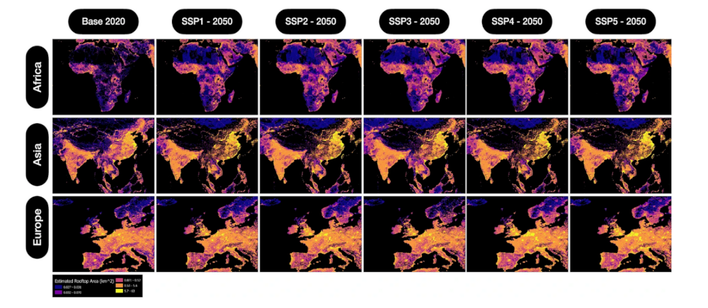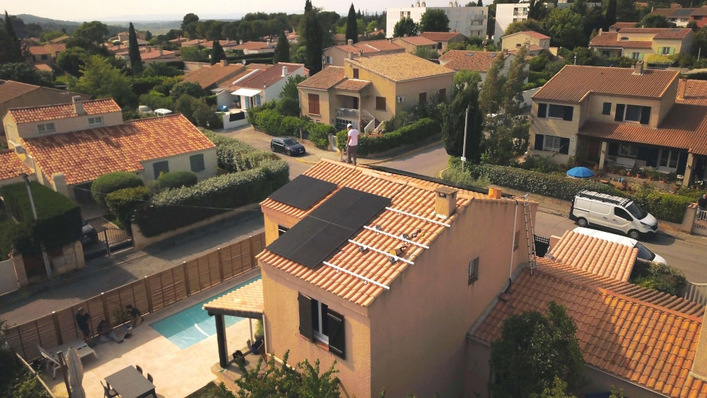Decentralized, decarbonized power grids managed by smart systems are sure to figure prominently in the future. A three-year European research venture, concluded in mid-2019, assessed what lessons districts, cities and towns can learn from pilot projects already underway. These researchers developed a simulation tool and published their results in a free guide. Germany’s Centre for Solar Energy and Hydrogen Research Baden-Württemberg (ZSW) and the European Institute for Energy Research EIFER teamed up with 13 partners from Europe in this multinational study coordinated by the Austrian Institute of Technology (AIT). The European Union funded it as part of the Horizon 2020 research and innovation program.
Entitled ReFlex – Replicability Concept for Flexible Smart Grids, this study was to analyze eight European pilot projects in four countries. Researchers were also tasked to develop a concept for replicating these smart grids at other locales. “The aim is to help regions build climate-friendly power infrastructures that emit less CO2,” says Simon Hummel, project manager at the ZSW. Rather than reinventing the wheel, municipal governments can draw on these insights to benefit from lessons others have learned.
How municipalities succeed at setting up smart grids
It will take efficient, holistic energy concepts for the exit from fossil fuels and nuclear power to succeed. The technology behind many sustainable systems is mature and ready to be integrated into smart electrical power and heating grids. However, researchers caution against merely copying earlier projects, recommending instead that solutions be adapted to local conditions. They say the make-or-break factors for municipal power projects are the populace’s support for modern energy infrastructure and investments in the future. Subsidies can help in cases where it may take longer to turn a profit.
Drawing on power companies and science institutes’ experience is a good idea, but researchers also recommend bringing local experts and installation companies on board. Continuous monitoring is deemed vital – a watchful eye helps ensure installations operate properly and sustainably over many years. Other such ventures can also benefit from this kind of “accompanying research” – that is, from the insights of scientists tasked to observe the project and evaluate outcomes.
The way to go – solar power, heat pumps, biomass cogeneration
The ZSW, an industry-oriented institute with experience developing and delivering sustainable energy systems, compared the technologies examined in the ReFlex study. They found that photovoltaic systems are fixtures in all pilot projects – they are the backbone of decentralized power generation. Biomass also sees widespread use. The researchers believe the ideal solution for smart grids is to combine renewable energies. “The Wüstenrot pilot project’s monitoring revealed that solar and wind power complement each other well. This combination furnishes the renewable energy needed to cover daily electricity requirements,” says Simon Hummel.
Electric heat pumps are a simple yet efficient link between electricity and heating systems, which explains their prevalence in all pilot projects. Other systems frequently incorporate solar thermal energy, near-surface geothermal energy, or biomass CHP (combined heat and power) plants. Fueled by biomass and connected to the heating grid, block-type thermal power stations are the key heating technology in municipal energy projects.
In the ZSW’s assessment, the optimum end-to-end energy system not only links electricity and heating. It also bridges the gap between electricity and mobility to boost overall efficiency and sustainability, and extend renewable energy sources’ reach to the transportation sector. If smart grids are to be operated sustainably, they have to be fitted with systems to measure and monitor the various technologies.
A simulation tool and guide for smart grids
The recently published guide presents the ReFlex project’s results, evaluates key smart grid solutions, and assesses technologies’ replicability and scalability to help municipal authorities make more informed decisions. Its opening section describes smart-grid use cases in the investigated regions. The authors choose these examples for their socio-economic relevance and replicable technology. The second section provides a checklist and a toolbox to assist interested readers with their planning and decision-making.
The researchers also developed a simulation tool, the ReflexBox. It serves to estimate households and residential neighborhoods’ demand for electricity and heating, and provides information on the given power supply’s flexibility in terms of time and the technology used. ReflexBox goes to help municipalities and distribution grid operators plan their smart-grid heating projects. This model factors local climatic conditions into the equation to let decision-makers know about the benefits of smart energy systems for households, and in particular, about the generating plants’ potential flexibility and load-shift capability.
The ReFlex study’s researchers also found awareness to be important: A well-informed populace in the investigated regions was willing to participate in infrastructure that generates and puts renewable energy to local use. However, a full-scale exit from fossil and nuclear fuels will require a larger regulatory framework that fosters business opportunities for companies to store seasonally-generated power and produce renewable fuels for the transportation sector, one example being power-to-gas. The English guide and simulation model are available for free at http://reflex-smartgrid.eu.(HCN)






